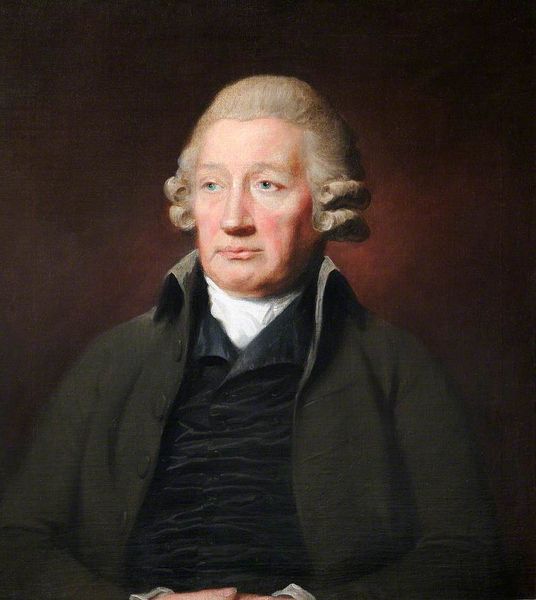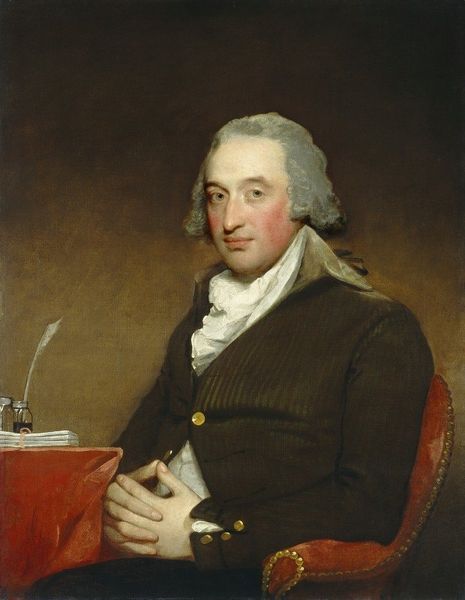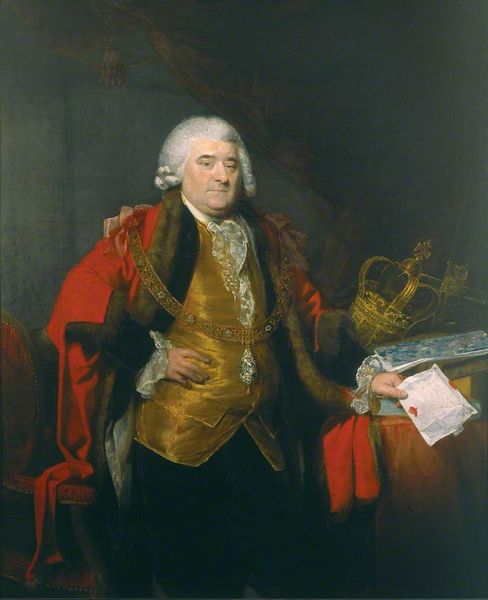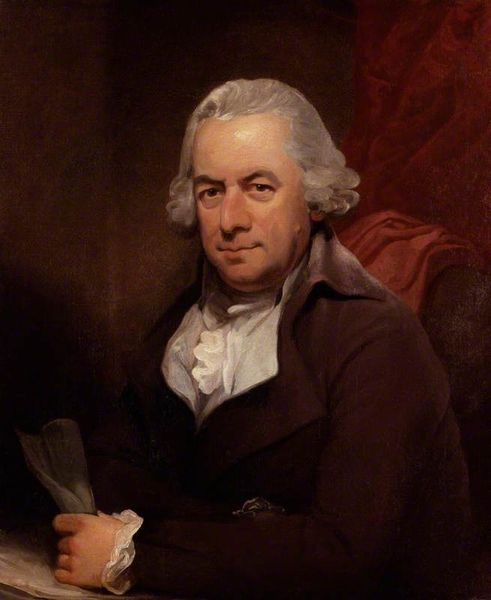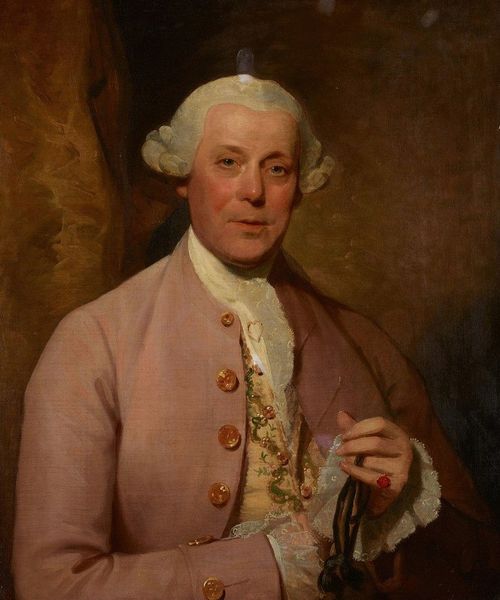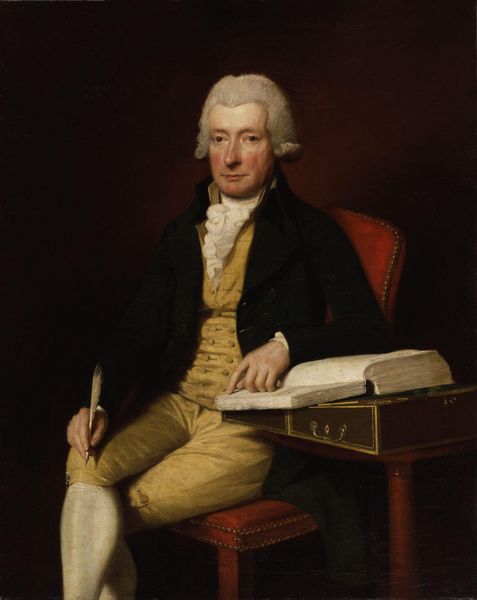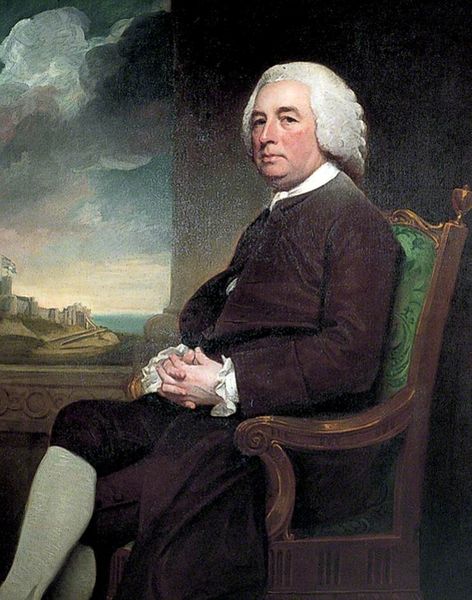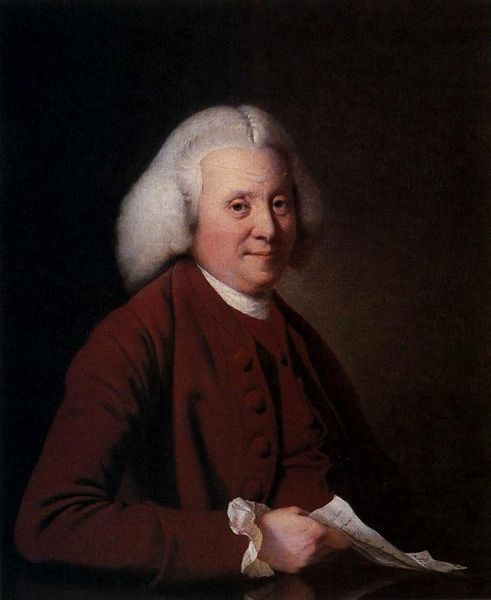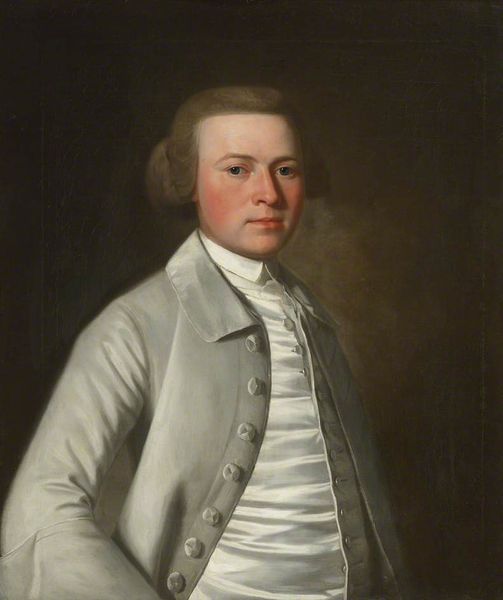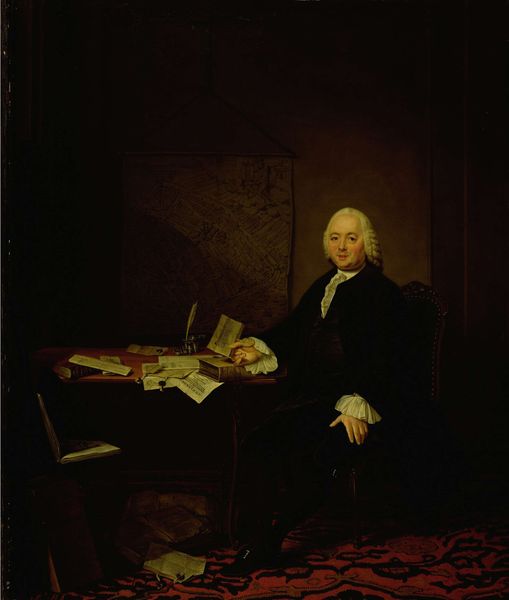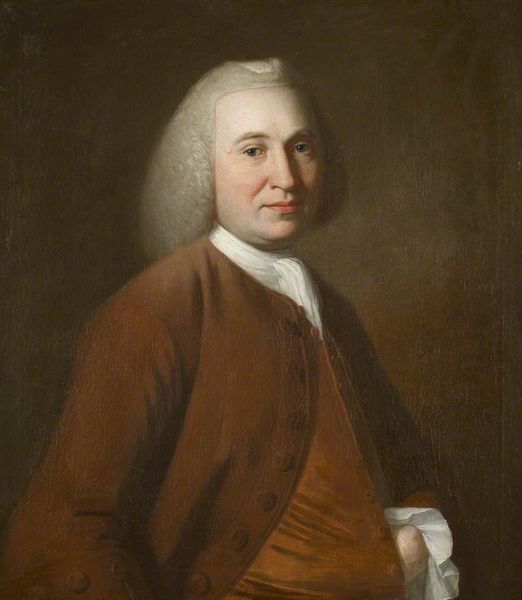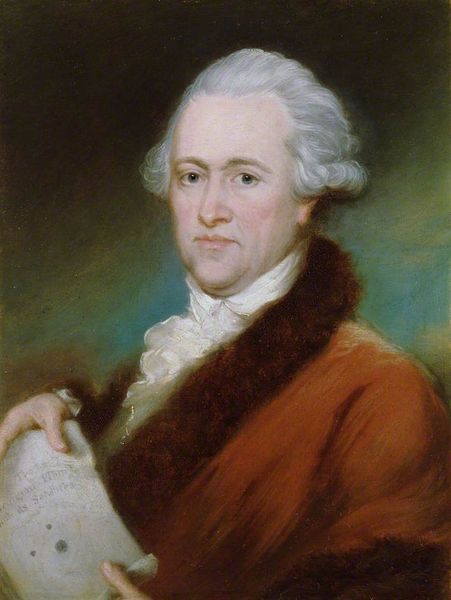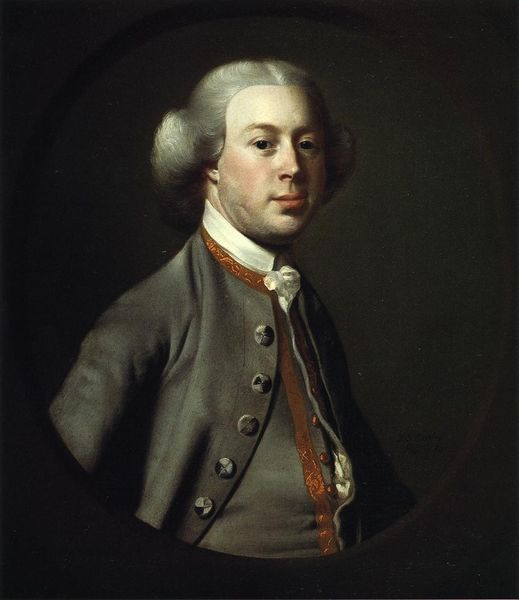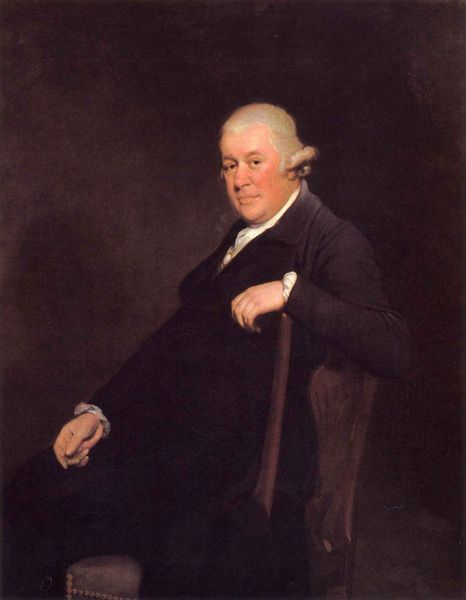
Copyright: Public domain
Curator: Painted in 1765 by George Romney, this is a portrait of James Ainslie. Editor: The initial impression is one of composed thoughtfulness. The light catches Ainslie’s face, but also this remarkable silver-grey wig, and there is this distinct compositional arrangement with a subtle diagonal formed by the sitter’s posture. It evokes a specific historical feeling, of course, with a subdued, contemplative air. Curator: Romney’s artistic choices are really interesting to consider, particularly with the broader societal expectations around portraiture. It's essential to remember that commissioning a portrait like this wasn't merely about representation; it was about projecting a certain status and ideology. We have Ainslie's calculated gaze, of course, but also the trappings of enlightenment in the form of books and what appears to be a bust in the background. It is as if he's signaling membership into a intellectual elite. Editor: Note the careful balance—the coolness of his clothing against the earthy tones in the background, and that wonderful bit of deep green fabric cascading at the edge, adding some texture. But what do you make of his almost severe expression? It's as if his carefully positioned body were counteracting some sense of disquiet. Curator: Well, there’s always the question of the sitter’s interiority, but let’s also think about power dynamics and gender. What would it have meant to present yourself as a man of thought versus action? The slight detachment in his expression speaks to an idealized version of masculine intellectualism from this period, rooted in colonial and patriarchal structures. I wonder how those dynamics influenced the production and reception of this portrait. Editor: The artist's choice to portray Ainslie amidst these classical, muted symbols surely invites contemplation about virtue and reason, those very concepts underpinning eighteenth-century values and aspirations. It strikes me, thinking about structure, how Ainslie’s gesture draws one into his own self-regard—it functions almost like a mirror, doesn't it? Curator: I agree that these elements offer a lens through which to view not just an individual, but the value system of the time. I suppose it urges us to consider what visual stories we choose to perpetuate, and at what cost. Editor: Exactly, by decoding its formal language and contextual echoes, a painting such as this offers new pathways into histories and stories.
Comments
No comments
Be the first to comment and join the conversation on the ultimate creative platform.
